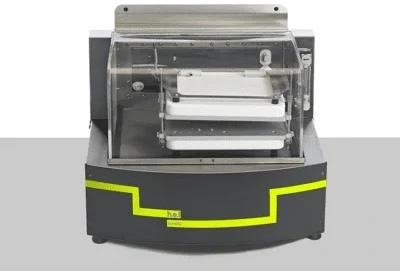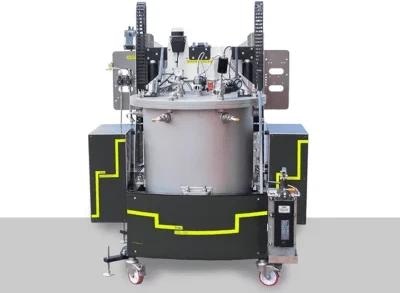Safety is a key consideration in the endless pursuit of improved batteries with faster charging times, higher capacities, and longer lifespans.

Image Credit: H.E.L Group
There have been many incidents in which battery failure has caused fires, with the news reporting catastrophic results in some instances. Decomposition reactions in batteries’ electrolytes and electrodes generate heat, accelerating these reactions and resulting in potentially dangerous thermal runaways.
Testing is essential to avoid these dangerous scenarios, and a battery failure's safe operational limits and consequences must be characterized and managed. However, no analytical technique can provide all the information required to establish model working conditions.
This article explores and compares three widely utilized battery evaluation techniques, outlining the principles and benefits of isothermal, environmental chambers, and adiabatic calorimetry.
Isothermal Calorimetry

iso-BTC – an example of an isothermal calorimeter. Image Credit: H.E.L Group
Calorimetry is concerned with the heat released or absorbed by a process, while isothermal calorimetry studies the behavior of the process of interest at defined temperatures, which remain constant throughout the analysis.
Results acquired via isothermal calorimetry are especially relevant to studying energy-storing devices such as batteries. Energy can be exchanged with the environment as a battery charges and discharges, with its value and behavior altering depending on the battery’s current temperature.
This exchange of energy has severe consequences. For example, operating under less-than-ideal conditions may lead to slower charging and faster discharge times, adversely affecting the battery’s lifespan.
Isothermal calorimeters equipped with charge-discharge units can monitor this process, accurately measuring the battery’s thermal behavior. Data acquired via these measurements can be leveraged to identify the battery’s optimal operational conditions and the potential risks of operating outside those conditions.
Environmental Chambers
The functionality of environmental chambers follows a similar principle to that of isothermal calorimeters, whereby the battery’s behavior is characterized by its exposure to and maintenance at defined temperatures.
Actual conditions may differ from testing conditions, so environmental chambers’ ability to test other variables is also useful in verifying battery longevity. For example, environmental chambers are ideally suited to testing factors like relative humidity (RH).
Conditions can be simulated by testing a range of environmental factors, and batteries’ behavior can be accurately characterized in an array of real-life situations. This allows the consequences of battery failure to be assessed, better enabling the implementation of appropriate mitigation strategies.
EUCAR (European Council for Automotive R&D) guidance involves using environmental testing to categorize batteries into one of eight levels.
For example, a battery must fall under the fourth category or less to be considered safe for vehicles. A loss of electrolyte mass may be considered acceptable at this level, but the battery may not rupture or explode.
Adiabatic Calorimetry
Like isothermal calorimetry, adiabatic calorimetry measures heat exchange. The most notable difference between these two techniques is that while isothermal calorimetry requires constant temperature maintenance, adiabatic calorimetry permits no environmental heat losses. This difference is key to enabling the in-depth characterization of thermal events.
Isothermal calorimetry and environmental chambers are ideal for characterizing batteries’ normal functioning, such as determining the limits where the battery is safe to operate.
Adiabatic calorimetry takes this analysis a step further, enabling analysis of battery behavior in the worst-case scenario, such as when the battery goes into thermal runaway.

BTC-500– an example of an adiabatic calorimeter. Image Credit: H.E.L Group
A range of fundamental information can be obtained via adiabatic calorimetry, including:
- The temperature at which the thermal runaways begin (exotherm)
- The amount of heat generated by the thermal event
- The relevant levels of temperature rise
Analysis and comprehension of the risks associated with battery failure and the point at which the dangerous zone begins are key to developing strategies to avoid reaching that point. They are also vital to developing strategies designed to minimize the consequences of such an event.
Risk minimization strategies may include cooling elements to prevent reaching the exotherm or improved insulation to help mitigate the impact of the thermal runaway itself.
Different Tools for Different Steps
EUCAR and other legislation require rigorous battery testing to keep device users safe. To this end, each of the techniques outlined here can be used to gain insight into specific types of battery behavior.
Isothermal battery testing is a powerful analytical technique for evaluating how varying temperatures impact a battery's normal function.
The temperature at which the device functions can impact charging and discharge, efficiency, and longevity, so understanding the impact of temperature changes is key to overall battery performance.
Temperature is not the only factor impacting battery efficiency and functionality. Other environmental factors, like relative humidity (HR), can alter their capabilities.
Environmental chamber testing provides fundamental information on battery function and enables robust failure analysis under adverse operating conditions. This analysis is key to understanding whether a device’s physical integrity may be compromised should a thermal runaway occur within its battery.
Adiabatic calorimetry is ideally suited to investigating batteries' behavior once they enter a thermal runaway. This technique provides vital insights into the exotherm’s evolution and the consequences of the battery’s failure.
Batteries are in continuous demand as society works to end its reliance on harmful fossil fuels. Therefore, it is important that batteries’ increased capacities, faster charging times, and longer lifespans do not come with higher risks.
Using a combination of isothermal calorimetry, environmental chambers, and adiabatic calorimetry, it is possible to robustly test batteries’ capabilities to develop safer energy storage devices suitable for current and future world needs.
Acknowledgments
Produced from materials originally authored by the H.E.L. Group.
H.E.L Explains | Calorimetry vs. Environmental Chambers in Battery Testing
Video Credit: H.E.L Group

This information has been sourced, reviewed and adapted from materials provided by H.E.L Group.
For more information on this source, please visit H.E.L Group.